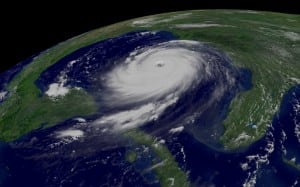NOAA Retires GOES 12 Satellite After Decade-Long Mission

GOES-12 captured this visible image of Hurricane Katrina on August 28, 2005. At that time, the storm was at Category 5 strength and projected to impact New Orleans.
Image Credit: NOAA
[Via Satellite 08-20-13] After more than 10 years of service, the National Oceanic and Atmospheric Administration’s (NOAA) Geostationary Operational Environmental Satellite (GOES) 12 spacecraft is being retired. Launched on July 23, 2001, the satellite lasted beyond its original operational design life of two years for on-orbit storage and five years of actual operations to support forecasters and scientists in NOAA’s National Weather Service.
Built by Space Systems/Loral, the spacecraft became operational April 1, 2003 as the GOES East satellite, monitoring weather across the U.S. East Coast and part of the Atlantic Ocean. On May 10, 2010, when GOES 12 was no longer able to be maintained to meet the requirements of the National Weather Service, it was shifted to a new position, where it provided coverage of weather conditions affecting South America, including volcanic ash clouds, wildfires, and drought.
NOAA continues to operate GOES 13, which serves as the GOES East satellite for the United States and GOES 15, which is the GOES West satellite – both hovering 22,300 miles above the equator. NOAA also has an orbital backup geostationary satellite, GOES 14, which can be activated if any of the operational satellites experience trouble.